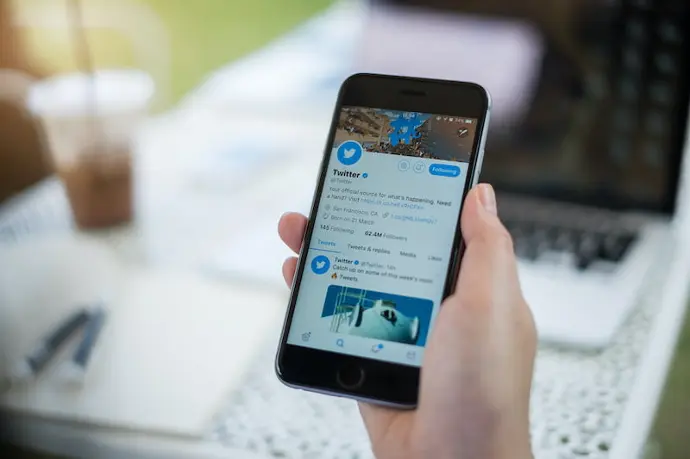In general, you should assume that any use of another person's artistic or creative work counts as copyright infringement unless you have a very specific reason to think otherwise (such as fair use).
For this reason, you should exercise caution when embedding a tweet into your website or blog to avoid a possible infringement.
In this article we'll discuss the basics of how embedded tweets interact with copyright law.
Copyright Infringement and Embedded Tweets: The Basics
Generally speaking, tweets count as copyrightable material and can therefore be protected by copyright law.
For this reason, you should always treat text-based tweets as no different from the text you would find on someone's blog or personal website.
In this way, all of the normal rules surrounding the use of copyrightable material will apply when you embed a tweet into your website or blog.
For example, you can't monetize someone else's tweet without their permission, and your unauthorized use of another person's tweet may lead to them bringing an infringement case against you.
Often, the best way to go about embedding a tweet is to simply speak with the original author and ask for permission.
After all, written permission from the copyright owner(s) is the best possible defense in case problems arise in the future.
If you cannot reach the author, or they refuse your request, you may still be able to use the tweet under the doctrine of fair use, provided you meet a few basic requirements (as outlined in the next section).
How to Embed a Tweet Under Fair Use
https://twitter.com/bluejdw/status/1307795264946794497
There are several ways to embed a tweet regardless of whether it's copyrightable or not.
For example, if someone wanted to embed my tweet about my baking skills (linked above), they would have to either ask for permission or embed the tweet under the doctrine of fair use.
Remember, an original (i.e. copyrightable) tweet cannot be a copy of someone else's tweet, and it must possess a minimal amount of creativity.
For example, a tweet that simply lists the Seven Wonders of the Ancient World would likely not fall under copyright law, as it would not be an expression of the author's creativity.
Since facts on their own are not protected by copyright law, tweets that simply state facts are similarly unprotected.
On the contrary, a tweet that contains an opinion on, analysis of, or creative expression (like a photo) about the Seven Wonders of the Ancient World would likely satisfy the requisite amount of creativity.
For example, a tweet that parodies the names of the Seven Wonders of the Ancient World by making them sound like breeds of cats would most likely fall under copyright law, and other users would have to be careful about embedding this tweet in their websites.
Twitter's Terms of Service page affirms that an author will retain their rights to any content they submit, post, or display on the platform, including content containing videos and photos.
By posting content on the platform, users only grant Twitter a license to redistribute the content on Twitter (through the use of retweets and other similar actions).
For this reason, individuals retain all other rights pertaining to their creative works, meaning that the only person who can give you permission to use a tweet is the person who wrote the tweet in the first place.
Embedding Tweets Under Fair Use
As we've noted in other articles on fair use, the only way to establish whether a particular use of copyrightable material counts as fair use is to take it to federal court.
Importantly, (1) copyright owners who share content online are not providing you a license solely because they post it online, and (2) simply because the content is online does not make it fair use for you to use.
Importantly, judges will always use four well-established factors to determine the eligibility of a fair use claim:
- The purpose and character of the use, including whether such use is commercial in nature or for nonprofit educational purposes.
- The nature of the copyrighted work.
- The amount and substantiality of the portion used in relation to the copyrighted work as a whole.
- The effect of the use on the potential market for or value of the copyrighted work.
When considering whether or not to embed a tweet into your website, you should be aware of these factors and consult with an attorney if you have questions.
For example, if you embed a tweet into an educational website that is not commercial in nature, your use would likely fall under the first factor, but the fair use analysis requires weighing the other factors, too.
Similarly, embedding information that is more factual, relating to the news for example, for your own commentary or news reporting purposes would lean in favor of fair use as well.
Remember, there are four factors, and the court weighs ALL of them, so just because one factor leans your way does not mean you have a fair use.
Remember, fair use is simply a defense you can claim in court, so the final determination really comes down to how well you can argue your case in court.
If the judge does not find that your use is a fair one, then you have admitted you copied, and it practically amounts to a matter of counting the damages. Consult with an attorney before citing fair use.
For this reason, embedding a tweet will always be a risk that can only be mitigated by following best practices or asking the copyright holder's permission first.
What About Images?
Images throw a curveball into the mix when it comes to Twitter and copyright law.
Images almost always count as copyrightable material, but finding out the owner of the copyright so you can request permission to distribute the tweet can sometimes be a bit difficult.
For example, if I took a photo of an apple spice cake (as seen above) and posted it on Twitter, I would still own the copyright to the image, but I would be licensing it to Twitter for distribution on its platform (i.e. retweets).
However, if someone were to download or embed my tweet (and/or the image contained within) they might infringe on my copyright depending on how and why they use the content (such as if they set my image as the featured image on a blog post).
Put simply, this "copyright-ception" means twice the potential licenses necessary, as you'll have to contend with both the copyright issues of the tweet itself and the copyright issues surrounding the image contained within the tweet.
Case Example: Justin Goldman v. Breibart News Network, LLC et. al.
A famous example of copyright infringement based on the unauthorized use of an image is the 2016 case of Justin Goldman v. Breibart News Network.
In 2016, Goldman took a photograph of Tom Brady, a famous NFL quarterback, and Danny Ainge, the president and manager of the Boston Celtics.
Goldman then posted this photo on his Snapchat Story.
The picture itself ended up being newsworthy, as it portrayed two highly popular public figures who would not normally cross paths.
For this reason, the photo went viral, and several users took the photo from Snapchat and posted it to Twitter.
Then, a handful of online publications such as Breibart, Yahoo, and The Boston Globe took tweets containing Goldman's photo and embedded them in their news stories without first receiving permission from Goldman, the original copyright holder.
As a result, Goldman sued these publications, arguing that they infringed on his copyright by embedding tweets with the original image.
Judge Katherine Forrest, the federal judge of the Southern District of New York, oversaw the case, and ultimately ruled in Goldman’s favor.
Judge Forrest based her decision on two premises:
- Goldman’s picture was substantial in nature; and,
- The publications did not properly license the image through normal copyright methods.
Put simply, the news publications did not use the photo to merely support the articles. Rather, the news articles were about Goldman’s photo itself.
Furthermore, Judge Forrest ruled that it didn’t matter that the publications were simply embedding the tweet and not downloading and re-uploading the photos on their own servers.
She ruled that in embedding the tweet, the publications engaged in a “technical process” that violated Goldman’s “exclusive display right” anyways.
That is why many news sites will ask individuals on Twitter if they can use their images as part of their news stories.
By doing so, they can make sure to avoid lawsuits like Goldman’s.
Case Example: McGucken v. Newsweek LLC
Also in the Second Circuit, in the Southern District Court of New York, Judge Failla rendered an opinion at the motion to dismiss stage regarding embedding content via Instagram's platform on June 1, 2020.
Elliot McGucken is a photographer who captures landscapes, and Newsweek happened to run a story in March 2019 about Death Valley and embedded one of McGucken's images.
Newsweek tried to dismiss the case citing that it had a valid sublicense because the content had to be licensed to Instagram, and Newsweek claimed it then received its sublicense from Instagram.
This literally amounts to the argument, it's on the Internet, so I had permission to use it.
They also argued if that weren't true then they had fair use as a defense.
Instagram's terms of service were referenced where the Court found the license language only granted Instagram a license to display the content, and no sublicense was expressly mentioned.
There needed to be some language that authorized Newsweek's sublicense or there needed to be an implied license, but the Court found an implied license didn't exist because "an implied license can only exist where an author creates a copyrighted work with knowledge and intent that the work would be used by another for a specific purpose."
See SHL Imaging, Inc. v. Artisan House, Inc., 117 F. Supp. 2d 301, 317 (S.D.N.Y. 2000)
Newsweek's only hope was a fair use argument. The Court cited Cariou v. Prince as one of the more recent fair use cases in the Second Circuit with a motion to dismiss.
The Court found the photo was not transformative, and the photo was not the focus of the article, so the purpose of news reporting was Death Valley and not the photograph by McGucken of Death Valley.
This nuance is important because creators can't tangentially use images that merely relate to content in blog posts or streams, they must actively be engaging and commenting on the content that's embedded under this Court's logic.
In this case, Newsweek could have asked for a license and did not do so.
Not only did the factors lean in favor of McGucken, but he was also able to claim statutory damages because the copyright was registered properly, and Newsweek denied McGucken's cease and desist request, so the court found the infringement was willful.
No damages were because the case was at the motion to dismiss stage only, but enhanced damages were made available for plaintiff to claim.
Conclusion
The guidelines that confirm whether or not a tweet is copyrightable are complicated and ever-evolving.
Generally, a tweet that contains a minimal amount of creativity is considered copyrightable.
Notably, tweets which simply state facts are not copyrightable, while tweets which include original analysis, commentary, or critique generally are.
Further, recent lawsuits have shown that the unauthorized use of a tweet containing an image may count as copyright infringement.
As such, you should be very careful in embedding a tweet that includes an image of which you are not the original author.
To err on the safe side, you should always approach tweets in the same way you would treat a blog post, article, or picture on another site.

